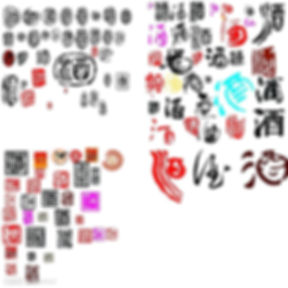WSET Diploma Tasting, Part 1
I wish to share with you some of the answering techniques some fellow WSET teachers amd friends were able to share woth me. The following is more a consolidation for easier understanding. WSET tasting at DIp level is surely not everything, it may be just one starting.
Appearance
Clarity- If you tilt a dull wine and it's rim is clear, the wine is "clear"
Color/ Intensity
- gradations of light in most rooms; not a big deal; this can be a waste of time
- important not to pour too much wine; WSET uses ISO glasses with a line 3 cm up the side of the bowl. 1 inch = 2.54 cm, so little more than an inch of wine in the glass
- white wines- get the color from the core, intensity from the rim
- white wines: most lemon or lemon-green; gold= some orange;
- if orange dominant, "amber"
- white wine intensity- from the width of the colorless rim
- if wide, "pale"; if thin, "medium"; "deep" = very little watery rim
- red wines- get the color from the rim, intensity from the core, then rim
- if rim is pink, wine is ruby
- if rim has some orange or brown, wine is garnet
- red wine intensity- look straight down- if you can't see the circle where the stem meets
the wine, the wine is "deep"; if you can see it but (after tilting) can't read through
the wine, the wine is "medium"
Nose/ palate
Intensity-
- a five choice scale (Advanced) is easier than a three choice scale (Intermediate)
- need to calibrate light, medium, pronounced
- first decide which of the above; most will be medium; then decide, above or below medium
- if not sure, "medium"
Aromatics- neutral, aromatic, oaked; primary, secondary, tertiary
primary- aromatics from the grape
secondary- aromatics from the winemaking process
tertiary- aromatics from ageing, oxidative or reductive
Level of sweetness- SAT categories designed to be used
dry- many wines
off-dry- most modern Alsace whites
medium-dry- typical German kabinett
medium to medium- sweet- typical German spätlese
sweet- classic dessert wines
luscious- sweet and incredibly viscous
Acidity- dribble test
Tannin- level of tannin not to be confused with nature of tannin (e.g. silky, rough)
Alcohol level- 12-13% = medium; start to feel heat, medium plus
Quality level- a good wine should show some varietal character, climate influence, be well balanced, well made, but necessarily concentrated, complex- e.g. Jacobs Creek Chardonnay because it tastes of chardonnay and is well balanced
very good - not only sense of place but also has complexity, maybe missing a little on the nose
outstanding- benchmark wine, nothing wrong.
acceptable- lacking varietal character or sense of place or some balance
poor- a lot of things are out of balance
Be prepared to change your decision because the wines will open up. Add aromatics, don't delete earlier notes because there is no negative marking.






















